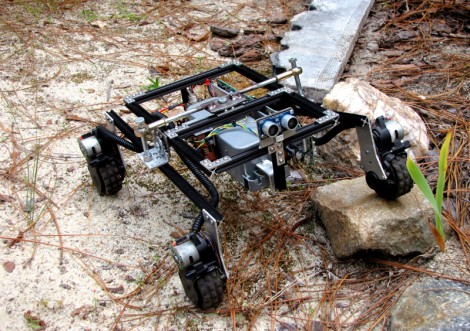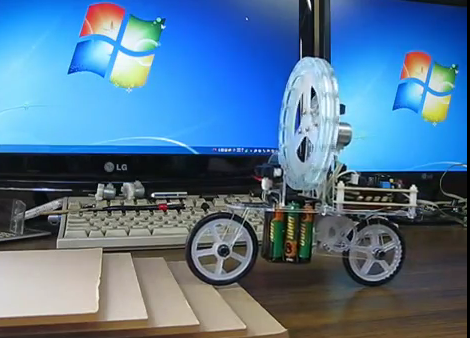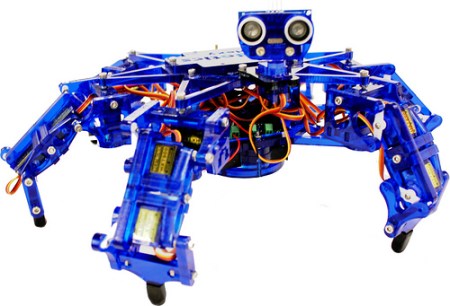
This is the fourth iteration that [Dino] has produced for his all-terrain robot. Just before this it was more of a turtle, with an aluminum pan shell. We think his upgrade to MicroRAX frame parts makes it look a lot better, and lightens the load so it can get around better as well.
It’s hard to tell from the picture, but many of the components are from a Roomba robot. The four motors, and the mainboard are all from units he picked up on eBay. To drive the motors he tapped into the H-bridge signals on the control board using a Seeeduino. His write-up (linked above) shares some of the details regarding the electronics, but the video after the break shows the development and assembly of the new chassis. It’s made from extruded aluminum bars which easily connect to each other with the system’s brackets. To interface with the non-standard parts he makes his own brackets from some aluminum sheet stock. It’s similar to other modular building materials, but the MicroRAX is a great size/weight for a small design like this one.
















